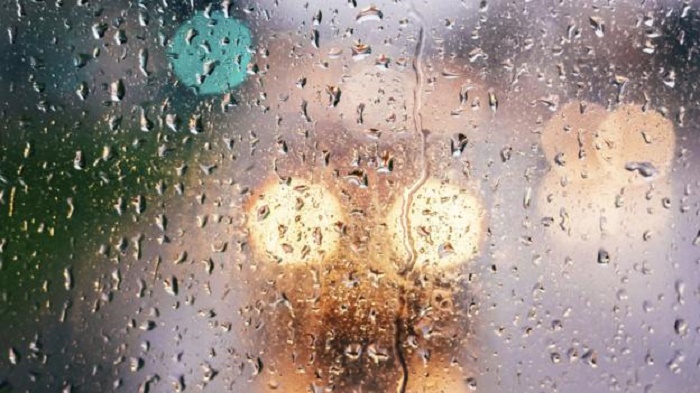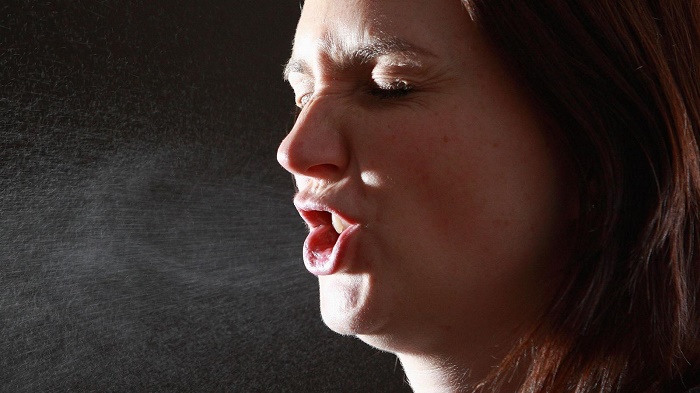The flu season arrives so predictably, and affects so many of us, that it’s hard to believe that scientists have had very little idea why cold weather helps germs to spread. Over the last five years, however, they have finally come up with an answer that might just offer a way to stem the tide of infection – and it revolves around a rather grim fact about the ways that your sneezes linger in the air.
A new understanding of influenza couldn’t come quickly enough; worldwide, up to five million people catch the illness each flu season, and around a quarter of a million die from it. Part of its potency comes from the fact that the virus changes so quickly that the body is rarely prepared for the next season’s strain.
“The antibodies we’ve built up no longer recognise the virus – so we lose our immunity,” says Jane Metz at the University of Bristol. It also makes it harder to develop effective vaccines, and although you can engineer a new jab for each strain, governments often fail to persuade enough people to take it up.
 ""
""Germs can linger for a long time on an underground train
The hope is that by understanding better why flu spreads in winter, but naturally fades in summer, doctors could find simple measures to stop its spread. Previous theories had centred on our behaviour. We spend more time indoors in the winter, meaning that we’re in closer contact with other people who may be carrying germs.
We’re more likely to take public transport, for instance – and as we’re pressed against spluttering commuters, misting up the windows with their coughs and sneezes, it’s easy to see how this could send us over a tipping point that allows flu to spread through a population.
Another popular idea concerned our physiology: the cold weather wears down your body’s defences against infection. In the short days of winter, without much sunlight, we may run low on Vitamin D, which helps power the body’s immune system, making us more vulnerable to infection. What’s more, when we breathe in cold air, the blood vessels in our nose may constrict to stop us losing heat.
This may prevent white blood cells (the warriors that fight germs) from reaching our mucus membranes and killing any viruses that we inhale, allowing them to slip past our defences unnoticed. (It could be for this reason that we tend to catch a cold if we go outside with wet hair.)
While such factors will both play some role in transmission, analyses suggested that they couldn’t completely explain the yearly emergence of flu season. Instead, the answer may have been lying invisible in the air that we breathe. Thanks to the laws of thermodynamics, cold air can carry less water vapour before it reaches the “dew point” and falls as rain.
So while the weather outside may seem wetter, the air itself is drier as it loses the moisture. And a steady stream of research over the past few years has shown that these dry conditions seem to offer the perfect environment for the flu virus to flourish.
 ""
""In winter, we’re more likely to take public transport, pressed against wet windows and spluttering commuters
Lab experiments, for instance, have looked at the way flu spreads among groups of guinea pigs. In moister air, the epidemic struggles to build momentum, whereas in drier conditions it spreads like wildfire. And comparing 30 years’ worth of climate records with health records, Jeffrey Shaman at Columbia University and colleagues found that flu epidemics almost always followed a drop in air humidity.
In fact, the overlap of the graphs was so close, “you could pretty much put one on top of each other,” says Metz, who together with Adam Finn, recently reviewed all the evidence for the Journal of Infection. The finding has now been replicated many times including analyses of the 2009 Swine flu pandemic.
That’s counter-intuitive – we normally think that the damp makes us ill, rather than protects us from disease. But to understand why, you need to grasp the peculiar dynamics of our coughs and sneezes. Any time we splutter with a cold, we expel a mist of particles from our nose and mouths. In moist air, these particles may remain relatively large, and drop to the floor.
But in dry air, they break up into smaller pieces – eventually becoming so small that they can stay aloft for hours or days. (It’s a bit like the mist you get when you turn a hose pipe to its finest spray.) The result is that in winter, you are breathing a cocktail of dead cells, mucus and viruses from anyone and everyone who has visited the room recently.
What’s more, water vapour in the air seems to be toxic to the virus itself. Perhaps by changing the acidity or salt concentration in the packet of mucus, moist air may deform the virus’s surface, meaning that it loses the weaponry that normally allows us to attack our cells. In contrast, viruses in drier air can float around and stay active for hours – until it is inhaled or ingested, and can lodge in the cells in your throat.
There are some exceptions to the general rule. Although the air on aeroplanes is generally dry, it does not seem to increase the risk of catching influenza – perhaps because the air conditioning itself filters out any germs before they have a chance to circulate.
And although the dry air seems to fuel the spread of flu in the temperate regions of Europe and North America, some contradictory results suggest the germs may act somewhat differently in more tropical areas.
One explanation is that in particularly warm and wet conditions of a tropical climate, the virus may end up sticking to more surfaces within a room. So although it can’t survive in the air so well, the flu virus could instead be thriving on everything that you touch, making it more likely to pass from hand to mouth.
 ""
""To understand why dry air makes us ill, you need to understand the peculiar dynamics of our coughs and sneezes
But in the northern hemisphere at least, these findings could offer a simple way to kill the germs while they are still hanging in the air. Tyler Koep, then at the Mayo Clinic in Rochester, Minnesota, has estimated that simply running an air humidifier in a school for one hour could kill around 30% of the viruses flying around the air.
Similar measures could (almost literally) pour cold water on other disease hotspots – such as hospital waiting rooms or public transport. “It would be a way of curbing the large outbreaks that occur every few years as the flu virus changes,” he says. “The potential impact in the cost of work days missed, schools days missed, and healthcare, would be substantial.”
 ""
""Can wearing a surgical mask help prevent a cold? Not always
Shaman is now working on further trials, though he thinks that it will involve a tricky balancing act. “Though higher humidity is associated with lower survival rates for influenza, there are other pathogens, such as pathogenic mould, that thrive at higher humidity,” he says. “So care must be taken with humidification – it`s not solely beneficial.”
The scientists are keen to emphasise that measures like vaccines and good personal hygiene are still the best ways to protect yourself; using water vapour to kill the germs would just offer an additional line of attack. But when you are dealing with an enemy as mercurial and pervasive as the flu virus, you need to use every possible weapon in your arsenal.
More about:
















































